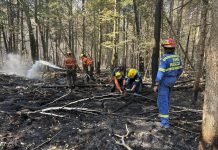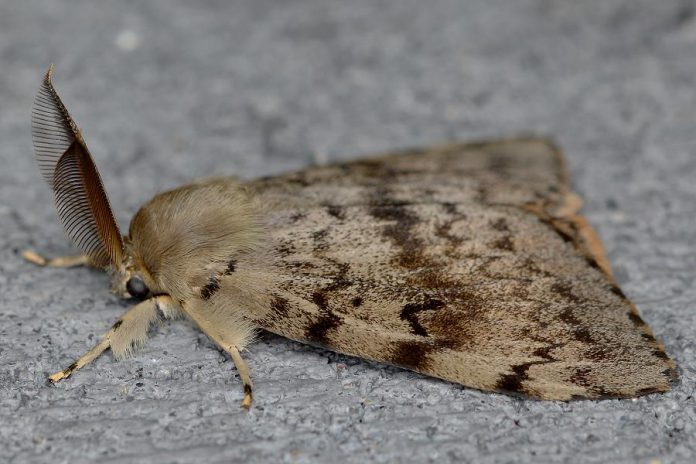
If you’ve noticed a lot of brown moths fluttering about and leaves on your trees filled with holes or completely eaten, you’re not alone.
As local naturalist Drew Monkman wrote in a July 10th column on his website, “our forests are under attack” by gypsy moths — with the insect’s larvae consuming the leaves of oaks, maples, birches, and other trees.
On Wednesday (July 29), the Ganaraska Region Conservation Authority (GRCA) announced that its phones “have been ringing off the hook with calls regarding gypsy moths”. The Invasive Species Centre of Canada also confirms reports from across southern and eastern Ontario of unusually high numbers of gypsy moths.
According to GRCA, the gypsy moth (Lymantria dispar) is an invasive species brought to North America from Europe in the mid-19th century. The moths escaped during a failed silkworm breeding experiment in Massachusetts in 1869. While they were first detected in Ontario in 1969, widespread defoliation did not occur until 1981.
Male gypsy moths are brown with jagged markings on their wings and feathered antenna. Females are white and do not fly. The caterpillars are around six centimetres long and are covered with grey bristles with two rows of distinctive blue and red dots. The caterpillars venture out of their hiding places at night wFhen they are safe from predators and eat all of the leaves in their path.
A single gypsy moth caterpillar can consume an average of one square meter of leaves. With sudden increases in gypsy moth populations (explosions of insect populations are called “irruptions”), tree stands can be defoliated in a matter of days.
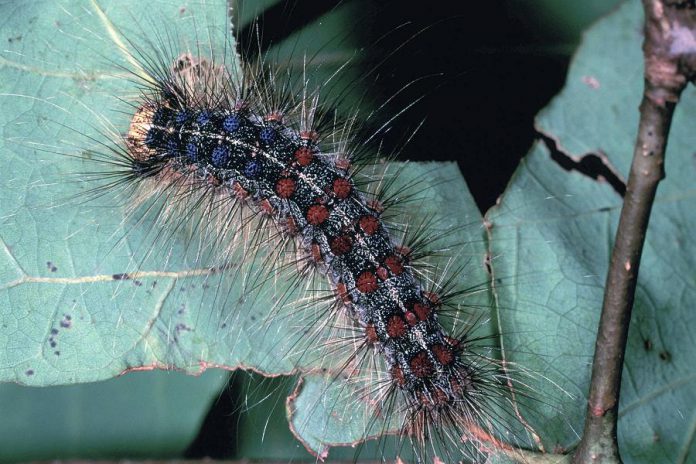
While it can be disturbing to see trees stripped bare of leaves, they will likely survive. According to GRCA, it takes 50 per cent defoliation or more over repeated years to cause mortality of healthy trees.
However, infected trees will need time to recover and may grow slower or have a smaller crown the following year — particularly during a drought year, when trees are already under a great deal of stress. You can help the trees recover by preventing a recurrence of gypsy moth caterpillars, and by giving your trees extra water during dry spells.
If you want to protect a large number of trees from the gypsy moth, GRCA says you can obtain a biological insecticide called BTK (Bacillus thuringiensis serotype kurstak). The insecticide is not toxic to humans or wildlife, as it is a bacterium that targets the moth’s caterpillars.
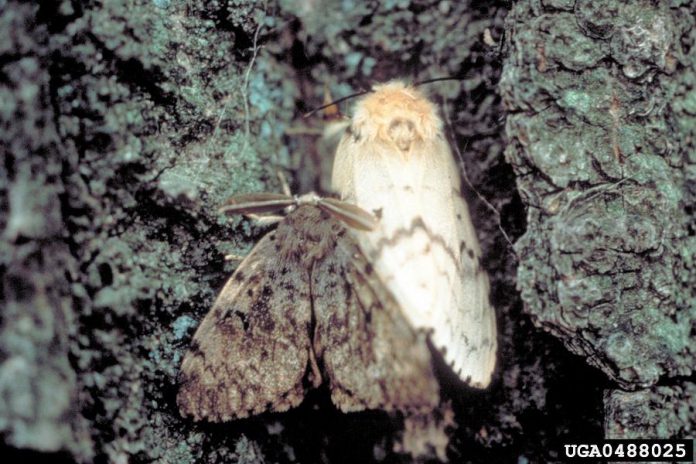
However, local naturalist Drew Monkman cautions against the insecticide’s use, saying it will also kill the caterpillars of moths and butterflies of all species, including monarchs.
In any case, it must be applied when caterpillars are feeding, which happens in June.
Instead, for protecting your own trees, Monkman recommends one or more of the following:
- Spray the infected leaves with a mixture containing equal parts of water, soap, and vegetable oil.
- Use a hose to dislodge the caterpillars from the leaves and then collect them when they try to climb back up the tree.
- Wrap burlap around tree trunks to make a trap, as some of the caterpillars will crawl down from the canopy during the day and hide in the material. You can then drop the burlap in a pail of soapy water to kill the caterpillars.
- Destroy any egg masses you find. The eggs are left to overwinter and hatch in the following spring. You can find egg masses on the underside of branches and on the trunks of trees (use a putty knife or other scraping tool to dislodge the egg mass, and then drop it into soapy water for 24 hours).
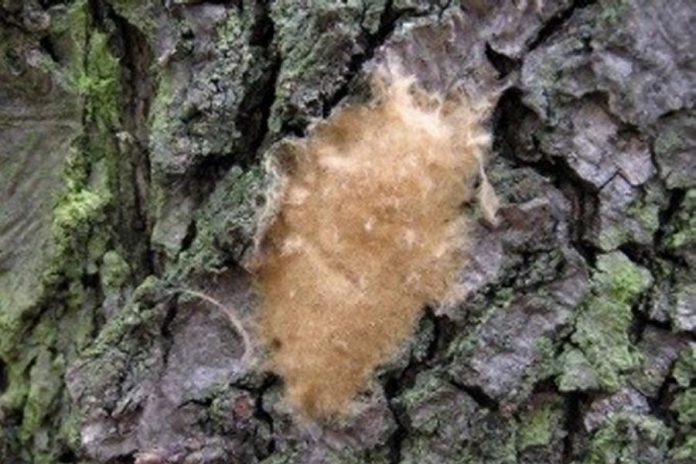
The Invasive Species Centre of Canada also suggests collecting and destroy any female gypsy moths (they are easy to catch as they do not fly).
The good news is that, as with most insect irruptions, the gypsy moth population may return to normal next year. Gypsy moth populations typically reach outbreak levels every seven to 10 years before eventually collapsing.
However, you can help to ensure your trees aren’t affected again next year by taking the above steps now to interrupt the insect’s breeding cycle.
VIDEO: Gypsy Moth Burlap trap for caterpillars



